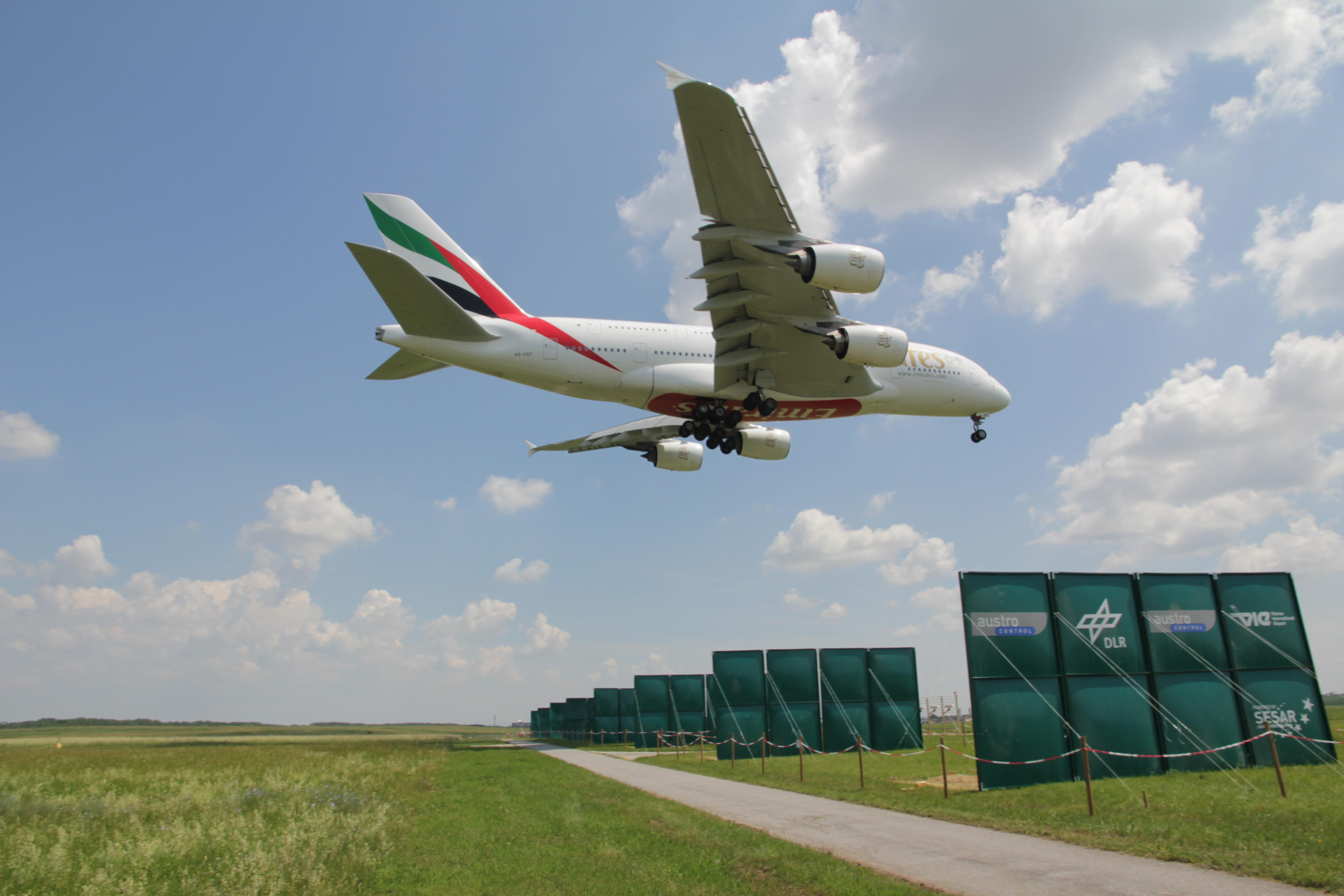
Rectangular plates erected below a final approach path may accelerate the dissipation of wake vortices and therefore enable aircraft to land closer to one another, thus increasing airport capacity, European researchers have found.
Sesar, Europe's research and development effort for improved air traffic management (ATM), supported the project, which is a finalist in the World ATM Congress’ Maverick awards.
The idea is to aerodynamically weaken wake vortices—the long-lasting, rotating airflows that are generated by every aircraft. They are powerful and can have a severe effect on any aircraft following closely behind. Smaller aircraft are particularly sensitive to the wake turbulence from widebodies and have to maintain extended separation distances.
Near an airport, a strong wind can blow vortices away. Otherwise, a wake vortex can hover a short distance upstream from the runway threshold for some time.
German Aerospace Center DLR and Austria’s air navigation service provider, Austro Control, have designed obstacles to weaken vortices. On a vertical plate, secondary vortices are created. The secondary vortices interact with the primary ones, thus making them decay, according to DLR researcher Frank Holzapfel.
Tests at Vienna Airport last year involved two lines of plates. Each line was perpendicular to runway 16 while the plates were parallel to it. The first line was located 400 m (1,300 ft.) from the runway threshold and the second line 320 m from it.
Built by putting together “trampolines” using a wood structure and synthetic fabric, a plate was 9 m-long and 4.5 m-high. Each line was made of eight plates, placed at 20 m-intervals.
DLR and Austro Control used lidars to “see” and measure vortices. About 1,000 vortex evolutions were analyzed, Holzapfel said. Vortices were found to dissipate 30% faster.
However, how this could translate into reduced separation has yet to be determined. DLR and Austro Control will apply the rationale used for the new RECAT EU standard in separation rules, Austro Control's ATM director Christian Kern said. He hopes the technology will be in service in three years.
In the meantime, a prototype will be built. The choice of a material (to replace the wood and fabric used for the first trials) will be key. It should be strong enough to withstand wind but frangible to avoid damaging an aircraft flying too low.
The prototype will also include a fold-down feature. In the event of a storm, the plates will be folded down to the ground automatically. That functionality will also be used when the opposite runway is in use to avoid interfering with navigation aid signals.
The prototype will be evaluated in Vienna or at DLR's test facility in Oberpfaffenhofen, Germany.
